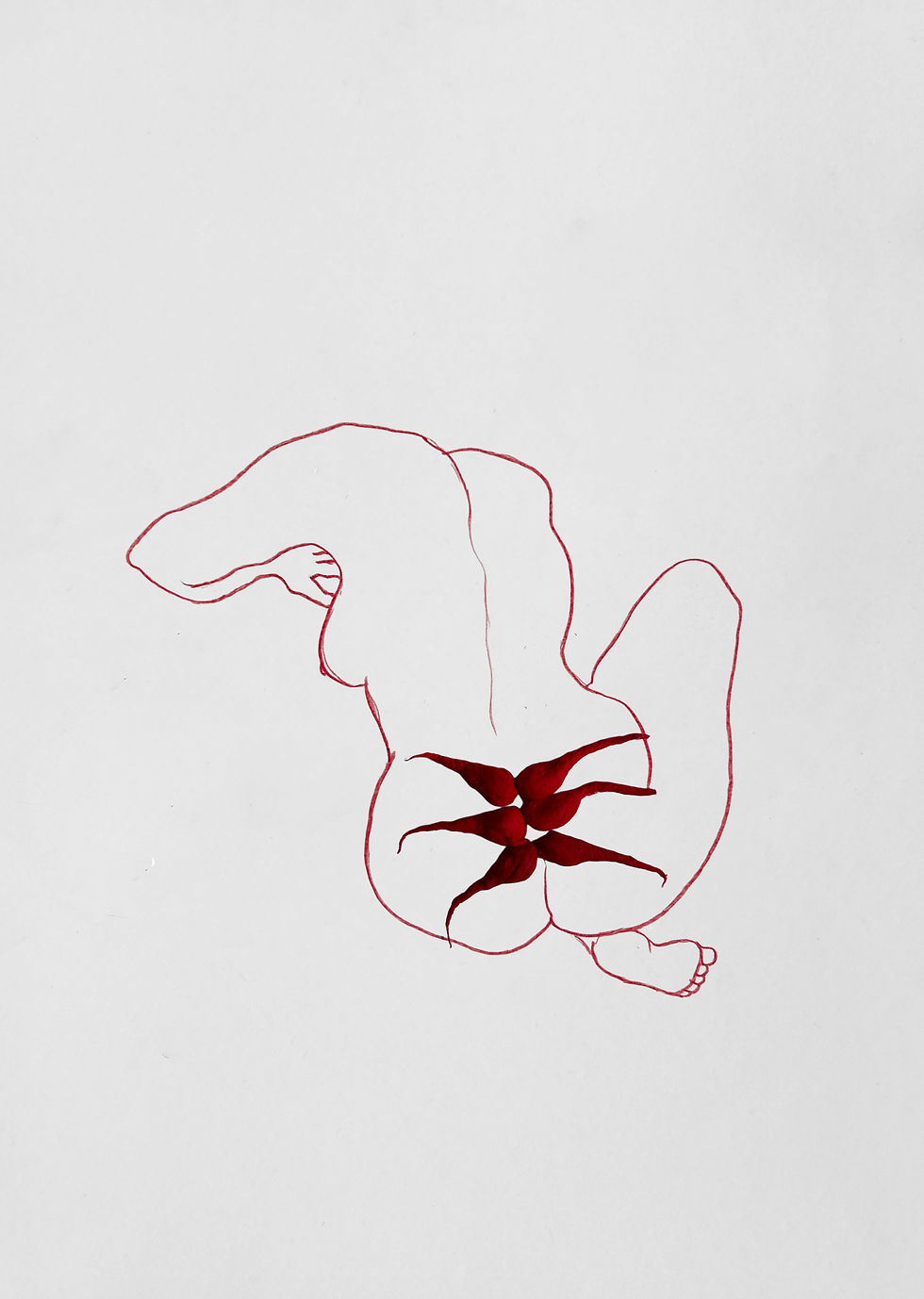Much of Megha Joshi's artistic practice focuses on gender, ritual and religion, although her uniqueness lies in her ability to express herself on a variety of subjects, in a variety of media. She has worked with conventional materials such as steel, fabric, bronze, rubber and, most interestingly, everyday objects and materials used in Hindu ritualism. His works are strong but experimental, as he does not believe in the forced homogeneity of artworks.
AVAILABLE ARTWORKS BY MEGHA JOSHI
COVID DIARIES SERIES
About the COVID DIARIES series: This set of drawings has been like a Covid-19 diary of one woman and her domestic realm. Simone de Beauvoir, the century's most iconic feminist scholar, called the burden of women's housework a "Sisyphean torture." In her book The Second Sex, she says, "Few tasks are more like the torture of Sisyphus than housework, with its endless repetition: clean becomes dirty, dirty is cleaned, again and again, day after day. The housewife wears herself out marking time: she does nothing, she simply perpetuates the present... Eating, sleeping, cleaning: the years no longer soar skyward, they stretch out ahead, gray and identical. The battle against dust and grime is never won." This sort of sums up the inspiration behind these artworks. So there are vegetables, fruits, and flowers, etc., playful battles with the cleaning series, the tragedy of the death of the pigeon in her studio, etc. Each one is a true story.
THE RED SERIES
About the RED series: are vermilion drawings with cotton/diya baati wicks used in prayer, the fruit of the artist's longstanding preoccupation with gender, religion and rituals. The interference of politics and religion with the female body as a site of worship has long disturbed her. Especially in India, the female body as a place of “honor” is a concept the artist explores. The continuing taboos around menstruation, temple entries, rape in communal riots, hypersexualization and the suppression of the female body are, in her view, issues that require attention. The drawings revolve around the labeling of women as midwives and breeders or sluts and whores; pure and impure, mine and hers, etc. For the artist misogyny is deeply rooted in India and we have to dig deep if we want to eradicate it.

MEGHA JOSHI
REPRESENTED ARTIST
Megha Joshi, born 1973, is a contemporary Indian artist. Trained as a sculptor from the Faculty of Fine Arts, MS University Baroda, India, Joshi worked as a set designer and art director for film and television for 10 years before she quit to return to her fine art practice in 2008.
She does scale installations such as with incense sticks for The Sculpture Park Madhavendra Palace, curated by Peter Nagy and cotton wool at the Sandarbh residency, Baroda. Drawing remains a constant in her practice. She has been actively participating in shows in India and abroad and has been invited to art residencies in Budapest, Scotland, Japan and Iceland. Her work has been shown at the India Art Fair almost every year. Her solos include ‘I:Object’ and most recently “Rite of Passage”, 2022-23, held in New Delhi. Her works are in the collection of galleries, institutions and collectors in India and abroad.






































